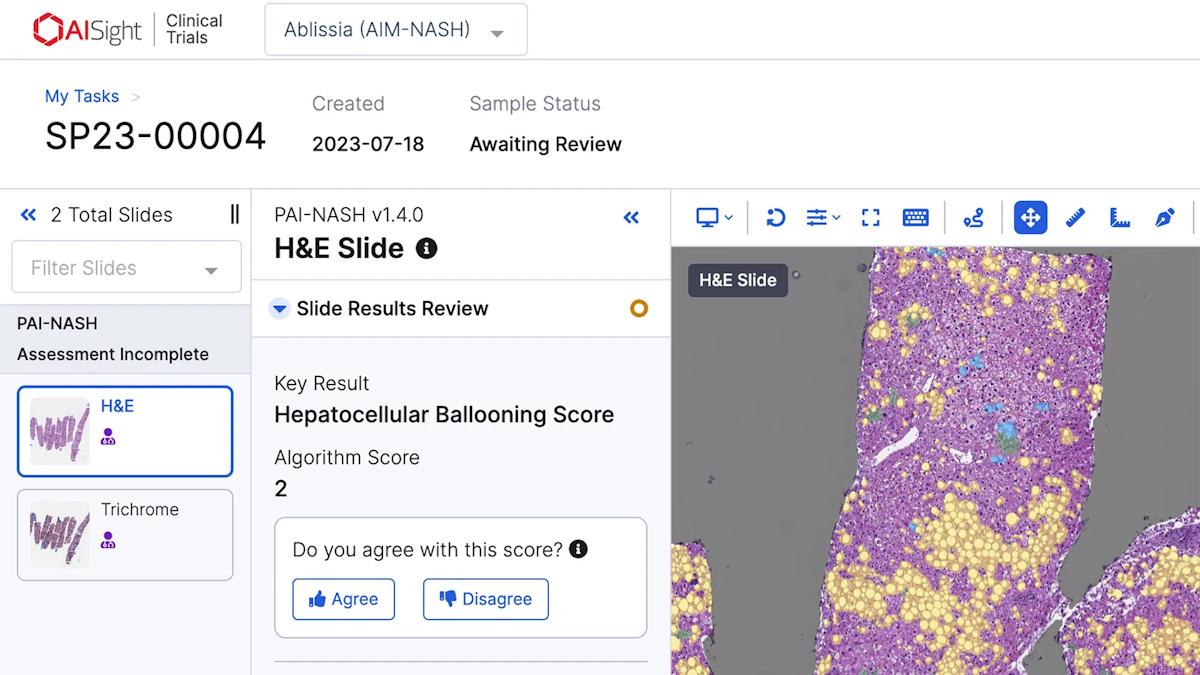Digitised pathology resource will speed HIV cancer R&D

A collection of clinical specimens that has been gathered from people living with HIV for almost 30 years has been given a digital makeover with the help of computational pathology specialist Proscia.
The National Institutes of Health (NIH)-funded AIDS and Cancer Specimen Resource (ACSR) is using Proscia’s Concentriq for Research software to dramatically reduce the time it takes to make this real-world data available to researchers from “hours to days”, making it a near real-time resource for researchers, say the partners.
ACSR’s repository includes specimens – often on glass microscope slides – that have been collected over decades from people with HIV who have been diagnosed with a wide spectrum of conditions and diseases, particularly cancers, both before and after treatment with antiretroviral therapy (ART).
As explained on a recent pharmaphorum podcast, Proscia’s mission is to tackle the problem that, while pathology data can be said to lie at the heart of biomedical research, it tends to be in an analogue form, often subjective, and localised – crying out to be digitised and made more accessible and easier to analyse.
“As digital pathology shifts the standard from microscope to high-resolution images, the ACSR recognised an opportunity to improve access to its data and drive further breakthroughs by adopting the technology,” according to an announcement from the ACSR and Proscia.
Proscia’s artificial intelligence-powered software is already being applied to projects looking at cancers that develop as a consequence of immune suppression in people living with HIV, and today the ACSR has announced a rare melanoma tissue repository on Concentriq for Research that will be accompanied early next year with a corresponding tumour tissue microarray.
Dr Paige Bracci, who is UCSF professor of epidemiology and biostatistics and director of the ACSR’s informatics programme, said the software "is not only making a difference for the scientific community, but also for the patients impacted by its work."
“Concentriq for Research has enabled us to quickly realise the benefits of digital pathology and get this real-world data in the hands of more researchers faster,” she added.
The software – which is also being used by other publicly-funded groups including the US Joint Pathology Centre, said to be the world’s largest human tissue repository – also fulfils a conservation and sustainability function, making a digital record of rare and exhaustible tissue specimens available to researchers.
David West, Proscia’s chief executive, said the technology “enables breakthrough research […] and has meaningfully improved access to this critical source of insight with our platform. We look forward to seeing the impact that the ACSR continues to make with enterprise digital pathology.”
A survey of pharma companies and contract research organisations (CROs) carried out by Proscia earlier this year found that 70% of them have invested in digital pathology to advance drug R&D, although, often those efforts are still focused on the use of legacy software systems, primarily for basic image viewing.












